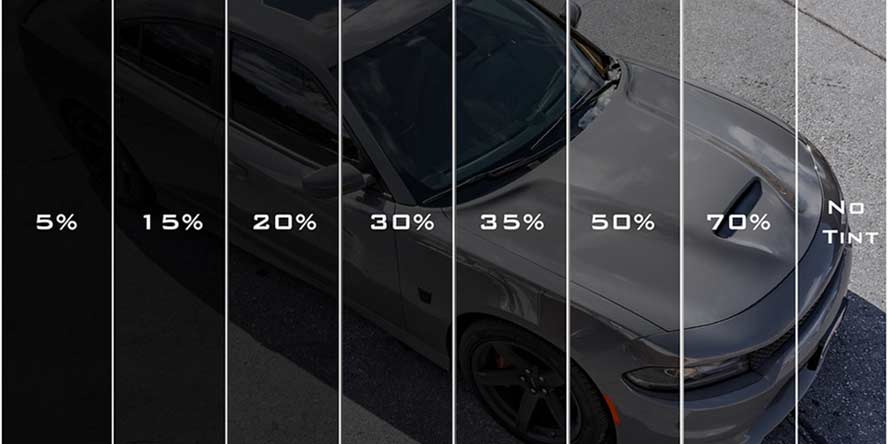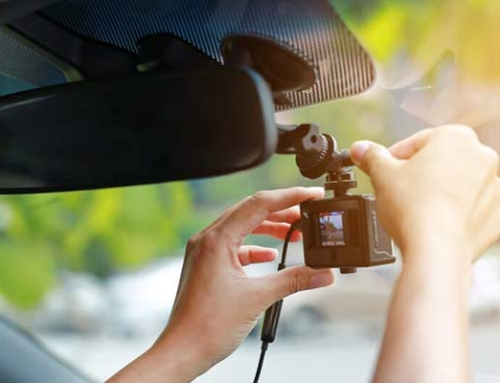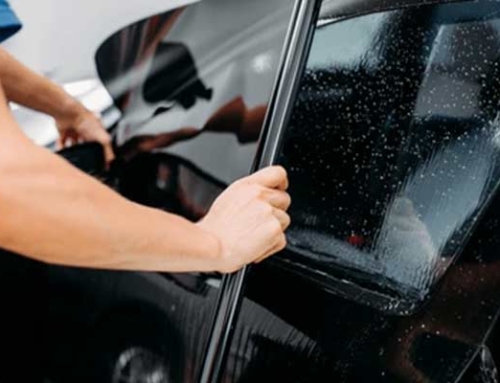
Florida’s vibrant lifestyle is best enjoyed under the warm sun. However, that sunshine can also translate to scorching car interiors and uncomfortable glare. Window tinting offers a solution, but choosing the right tint can be confusing with various options available. This guide delves into everything you need to know about window tinting in Florida, helping you find the perfect balance between comfort, style, and legal compliance.
Understanding Window Tint Laws in Florida
Before diving into tint options, understanding Florida’s window tint laws is crucial. Violating these regulations can lead to fines and even tickets. Here’s a breakdown of the key points:
● Darkness Levels:
- Front Side Windows: Must allow more than 28% of light in.
- Back Side Windows & Rear Window: Must allow more than 15% of light.
- Windshield: Non-reflective tint is permitted above the manufacturer’s AS-1 line (a small area at the top).
● Reflection:
- Front Side Windows: Reflection must not exceed 25% of visible light.
- Back Side Windows: Reflection must not exceed 35% of visible light.
- Windshield: No reflective tint allowed at any level.
Important Note: It’s always recommended to double-check these regulations with official sources like the Florida Department of Highway Safety and Motor Vehicles (http://www.leg.state.fl.us/Statutes/index.cfm?App_mode=Display_Statute&URL=0300-0399/0316/Sections/0316.2953.html) for the latest updates.
Choosing the Right Tint Percentage: Balancing Benefits and Legality
Now that you understand the legalities let’s explore the different tint percentages and their benefits:
- Light Tint (35% – 50%): Offers a subtle look while providing mild heat rejection and reducing glare. This option is good if you prioritize legal compliance and don’t require significant darkness.
- Medium Tint (20% – 35%): This popular choice substantially reduces heat and glare, improving cabin comfort. It offers a moderately darkened appearance while complying with Florida’s front-side window tint laws.
- Dark Tint (5%—20%): This offers significant heat rejection, glare reduction, and a very dark aesthetic. However, these tints might be illegal for front-side windows in Florida and can hinder nighttime visibility.
Choosing the correct percentage depends on your priorities:
- Heat Rejection: If reducing heat buildup inside your car is a primary concern, opt for a medium or dark tint.
- Glare Reduction: All tint percentages help with glare, but medium and dark tints offer the most significant improvement.
- Privacy: Darker tints provide more privacy for you and your belongings.
- Nighttime Visibility: Be cautious with very dark tints, as they can significantly reduce visibility at night.
- Legal Compliance: Ensure the chosen tint percentage adheres to Florida’s regulations, especially for front-side windows.
Beyond Darkness: Considering Tint Features
While darkness is a crucial factor, other tint features can enhance your experience:
- Ceramic Tint: Offers superior heat rejection compared to traditional dyed film, keeping your car cooler.
- UV Protection: Look for tints that block harmful UV rays, protecting your skin and interior from sun damage.
- Signal-Friendly Tint: Certain tints allow radio and GPS signals to pass through efficiently, avoiding interference.
I’d like to know about these features with a reputable tint shop that will help you find a product that caters to your needs.
Installation Matters: Choosing a Qualified Tint Shop
The quality of installation significantly impacts the look, performance, and longevity of your window tint. Here’s what to consider when choosing a tint shop:
- Experience and Reputation: Look for shops with a proven track record and positive customer reviews.
- Warranty: Opt for shops offering a warranty on the film and the installation process.
- Film Quality: Choose shops that use high-quality, reputable window tint brands.
- Compliance Knowledge: Ensure the shop is well-versed in Florida’s window tint laws and can advise you accordingly.
Feel free to ask questions and get quotes from multiple shops before deciding.
Maintaining Your Window Tint for Long-lasting Performance
Proper care extends the life and performance of your window tint:
- Avoid Rolling Down Windows for 24-48 Hours: Allow the tint to fully cure for optimal adhesion.
- Clean Gently: Use a mild soap solution and a microfiber cloth to avoid scratching the tint.
- Avoid Abrasive Cleaners: Harsh chemicals can damage the tint film.
These simple tips will ensure your window tint performs well for years.
Conclusion:
In Florida’s Sunshine State, choosing the right window tint is essential for comfort, style, and legal compliance. Understanding state regulations and ensuring your tint balances darkness levels with law adherence is paramount. Each offers unique benefits from light to dark shades, but installation quality and maintenance are crucial for long-lasting performance.
FAQs
- What’s the legal tint limit in Florida?
Front windows: More than 28% light in.
Back windows: More than 15% light in.
There is no reflective tint on the front windows.
- What tint is both legal and helpful?
Medium tint (20% – 35%): Good for heat and glare, follows Florida rules.
- How can I be sure my tint follows Florida law?
Ask a trusted tint shop. They know the rules and can help pick the right tint.
- Can I get a tint that cools the car well?
Yes, try ceramic tint. It’s great for heat and still legal.
- How do I keep my tint looking good?
Don’t roll windows down for 24-48 hours after installing. Clean gently with mild soap and a soft cloth. Avoid harsh cleaners.





